There is always an air of anticipation (and anxiety) when contemplating building a new design that you have never seen (much less been on board). Such was the case a few years back, when WoodenBoat School shop manager Jerry Cumbo and I were casting about for another boat to use as a shop project for the Fundamentals of Boatbuilding courses taught at the school. The design needed to be technically interesting, with plenty of different operations, yet not so complex that it would take forever to build. It had to be safe and handle well enough that it might be a candidate to join the school’s waterfront fleet, and at the same time be practical enough that a student might actually want to build one. And it wouldn’t hurt if it looked good, too. We already had the usual suspects on the floor—the dory types and East Coast carvel pulling boat types. We were ready for something new, but what?
That’s when Mike O’Brien, WoodenBoat’s senior editor and design guru, suggested Skylark by Paul Gartside. Mike had recently reviewed the boat for the magazine and liked the cut of her jib (and other parts, too). Skylark was designed for day-sailing in the sporty estuary and ocean waters off the Oregon coast. Gartside’s customer had a preference for the lug-rigged older British sailing dinghies, and that’s where the design began. The resulting plans looked great. With a 14′ length and a 5’8″ beam and tipping the scales at a beefy 550 lbs, Skylark is one big, little boat with plenty of freeboard and stability. A quick look at the design reveals hollow waterlines forward, an easy run of planks aft, and a broad transom that barely touches the water. She has lots of rocker so she would tack easily, and if need be, would be efficient enough to move decently with either oars or small outboard. Skylark reflects her British Isles heritage with robust construction featuring a heavy-duty skeg-type backbone, lapstrake…er, clinker (in the British parlance) planking fastened with square European-type rivets, a plethora of frames, and a profusion of reinforcing knees—at the transom, stern, and thwarts.
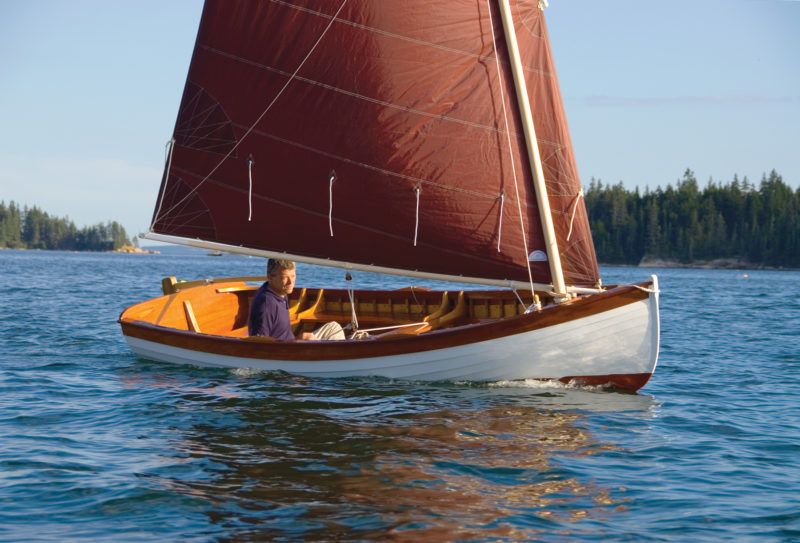 Photo by Benjamin Mendlowitz
Photo by Benjamin MendlowitzPaul Gartside designed Skylark, a 14′ daysailer, in the tradition of the sailing dinghies of his native Britain. The boat is heavily built and robust, and is also a fine sailer. Rig options include the lugsail shown here, and a marconi sloop.
Paul also penned in a handsome sheerline—this being the top edge of the boat’s hull, in profile. It’s an important element in a boat’s shape. Get it wrong, and the boat’s looks will suffer considerably. Oftentimes, small, wide boats can have sheers that look powderhornish—meaning their sheers dip precipitously up forward. They can sometimes look outright dumpy, but in this case, the sheer is elegant and, in profile, evokes the look of a svelte yacht dinghy. Best of all was her practical, near workboat ambiance. There was nothing that demanded expensive wood and 14 coats of varnish. Nor did it request a blue blazer or an ascot. Instead, it said, “Just jump in with a few friends and go—and don’t forget to bring the dog.” We were sold.
We did, however make few East Coast modifications to Skylark’s specifications. To wit: We planked the hull with Maine white cedar rather than the Western red cedar, for a couple of reasons. First, the Maine cedar is a tougher wood that resists impact and stress better than the red. Second, we had a good supply of it. We also made the planking a bit heftier as added protection from the occasional rocky beach landing. The knees were to be made of local hackmatack root.
Also, originally the plans called for a galvanized-steel centerboard. To standardize the boat with the rest of the WoodenBoat fleet, we opted for a Dynel-covered plywood board (ballasted with a slug of lead) that could be hauled up with a simple lanyard and cleated off.
Then, there is the matter of which sail rig to use. Skylark can be built with a deluxe gunter jib and main rig (94 sq ft) or the basic standing lug (88 sq ft). Again, opting for simplicity, we went with the free-standing lug.
The result of our modifications is a boat that is possibly somewhat more heavily built than the original design, but the difference is nothing to write home to mother about. We didn’t log the time required to build ours, and it wouldn’t be a meaningful figure if we had, for it was built in a classroom setting. However, designer Gartside suggests that the boat will require 600 hours of a highly skilled boatbuilder’s time.
Fast-forwarding, the boat was built over a number of summers in classes taught by a few different instructors and fashioned by literally hundreds of hands of students and alumni and shop staff. The resulting boat was even better looking than we had hoped for. She’s elegant, in a practical way, with an easy-to-maintain finish. Her topsides are painted with marine enamel, and the interior has a bright, oiled finish. That oil, it should be noted, will not remain as bright over the years as it appears in the accompanying photographs. It will weather to black, but will be far easier to maintain than varnish.
And how does she sail? The waterfront staff have all given Skylark universally high marks. Her inviting accommodations are comfortable to be in and can easily sail with four adults aboard. With her standing lug rig with a single halyard, she is simple to get underway. Just jump aboard and drop the centerboard, and off you go. That’s what Al Fletcher, WoodenBoat’s waterfront manager, did at the end of last summer. His shakedown sail resulted in the usual tweaks to a new boat’s rig, but he had high praise for the design.
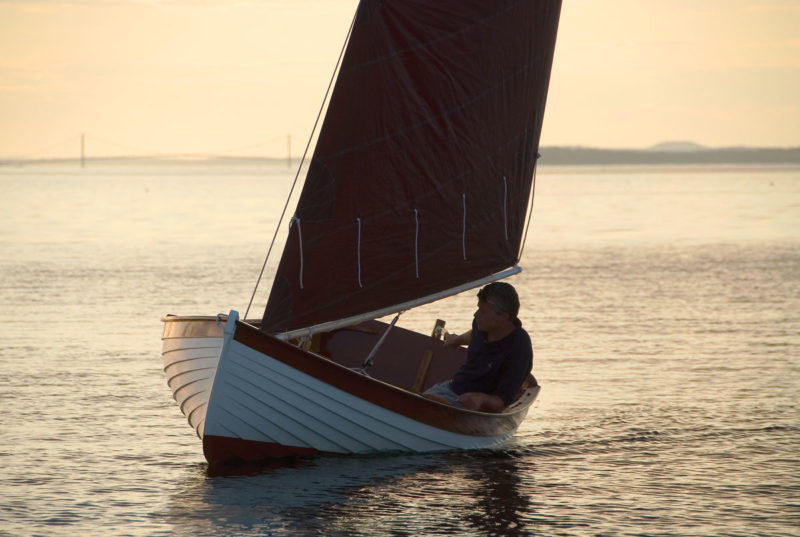 Photo by Benjamin Mendlowitz
Photo by Benjamin MendlowitzDespite her weight—which is rather high compared with other boats of her size—Skylark will keep moving in tiny zephyrs. When the wind dies all together, you can lift the boom above head-height and break out the oars.
On an outing in 12 knots of breeze, Fletcher reported good offwind speed. Upwind performance that day suffered as a result of a too-short mast, which produced a rather severe wrinkle in the sail. He said, “The boat tacked without hesitation and we were never caught in stays, even with minimal forward movement.” Al’s conclusion? “This is a roomy, quick, and stable 14′ open dinghy that I believe will give an outstanding account of herself once we get the rig sorted out.”
By season’s end, WoodenBoat’s new Skylark had a longer mast, and she was well through her teething problems. It seems nobody can pass by her without stopping and commenting on her beauty and grace. She has proven herself fast, sailing well with a good turn of speed (even in light air due to her tall lug rig). She tacks well without hesitation, feels stable both at the dock and under sail, and has a delightful chortle as water travels over the laps. Like all centerboard hulls, Skylark can cruise where no deep-keeled daysailer would dare to venture. Her draft, board up, is but 10″; with it down, it is 3′ 4″. She beaches handily with the kick-up rudder. Notes one passenger of the boat, “It even smells good.”
Granted, a single design will not be the perfect choice for all. In fact, Al Fletcher notes that Skylark was brought into the WoodenBoat fleet specifically to fill the niche between a 17′ Fenwick Williams catboat and a 12′ Beetle Cat. Four adults looking for a fine afternoon on the water will find the elegant yet working-class Skylark to be a delight. She is just a lot of fun to sail.
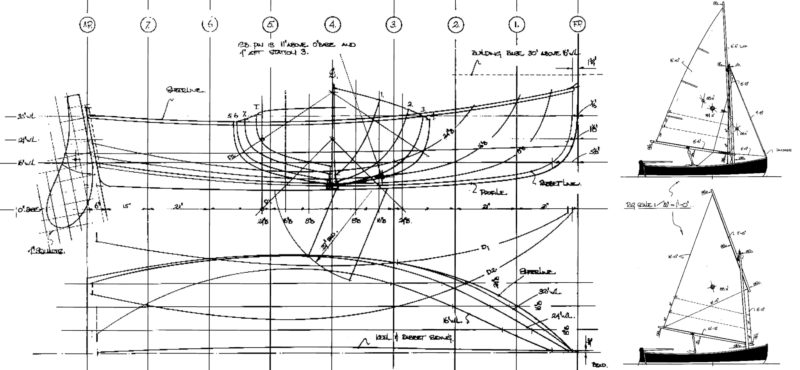
Designer Paul Gartside draws his plans with an unusual level of detail and artistry. He’s well known for small, ocean-capable sailing cruisers based on the fishing vessels of the west coast of England, but his portfolio is much wider than that. His Skylark design is filled with traditional elements, and is not a simple boat to build. But she is a simple boat to sail.
Plans for the Skylark are available from Gartside Boats.
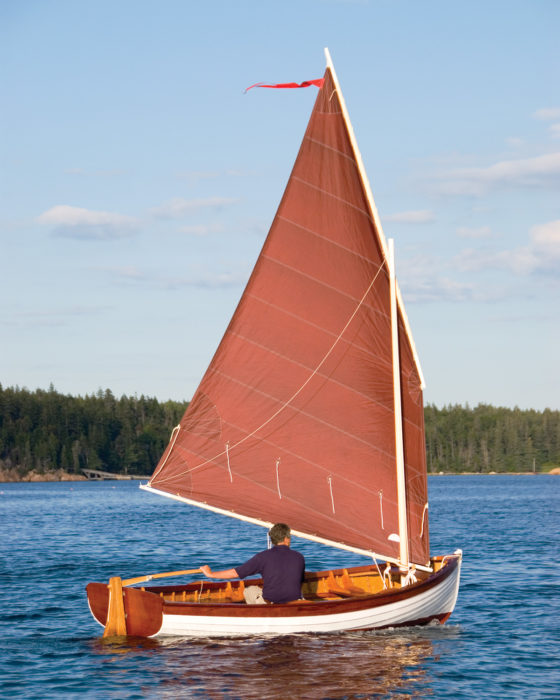
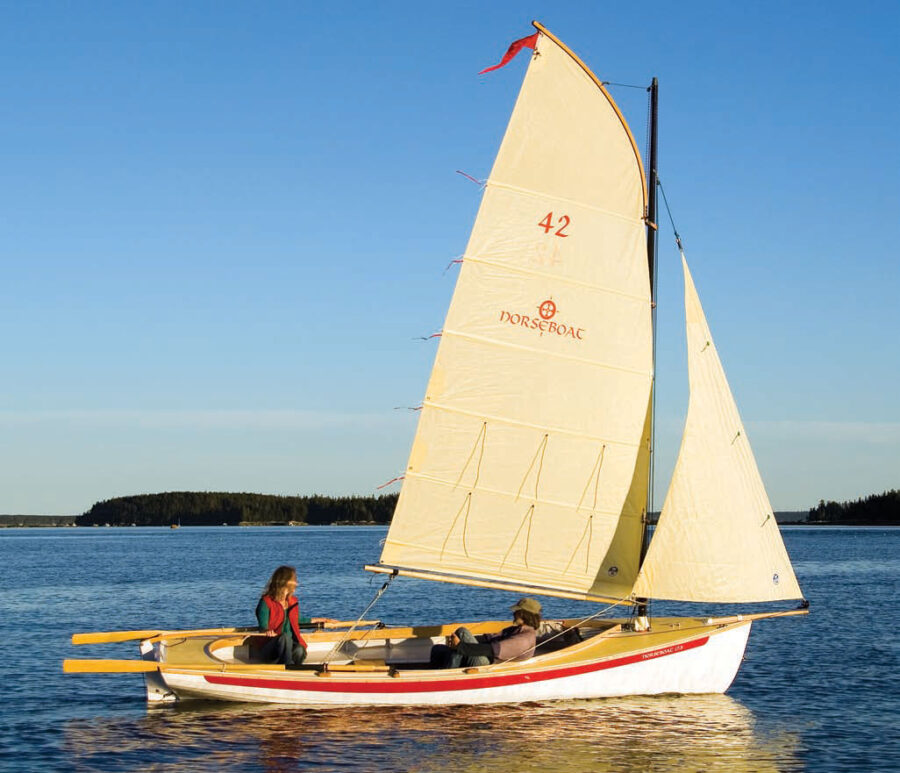
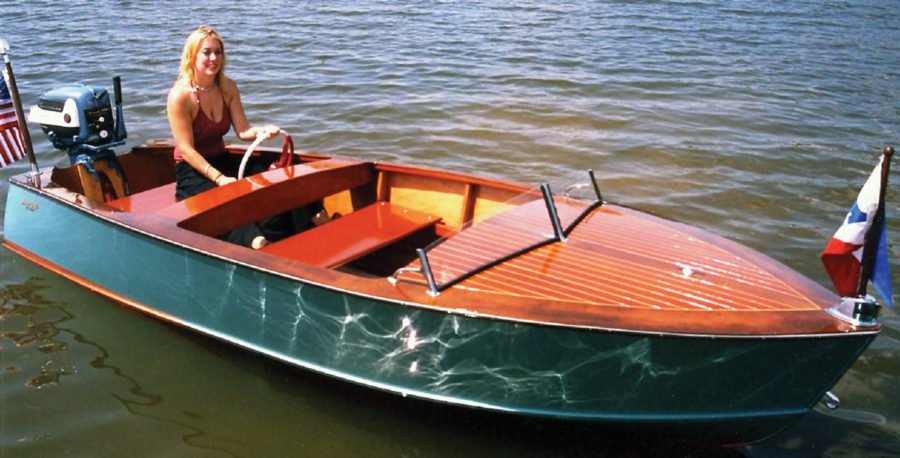
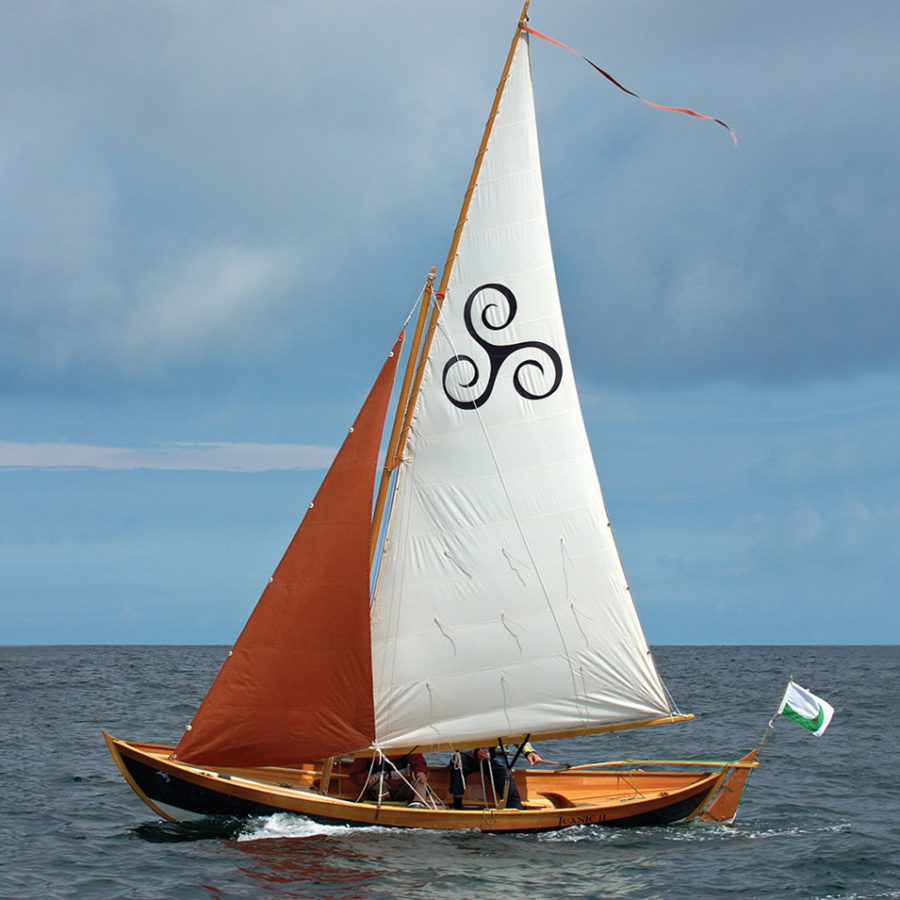
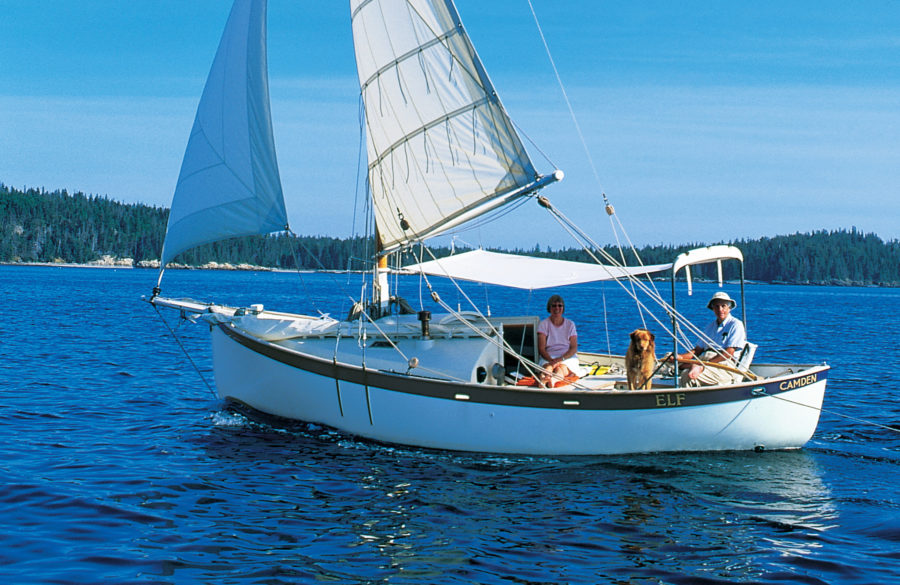
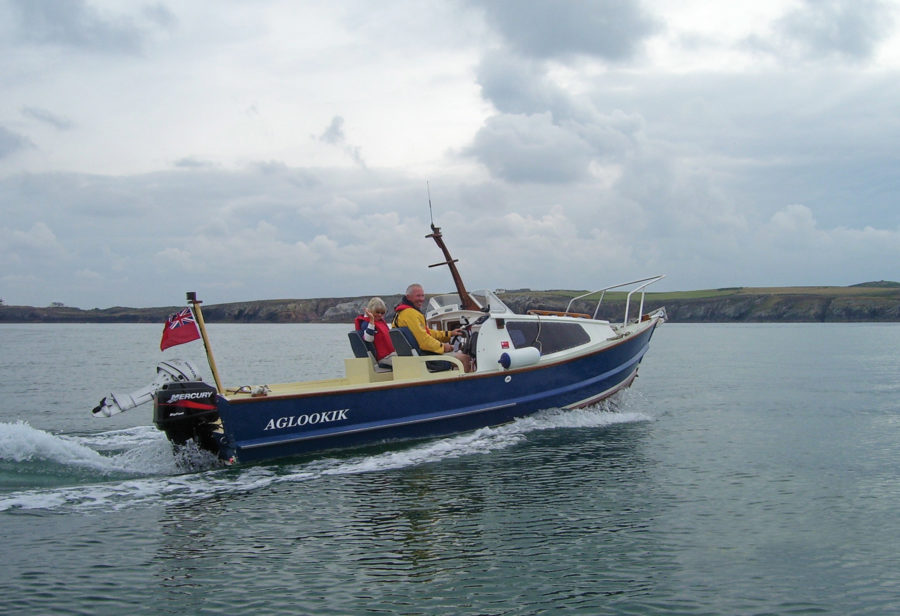
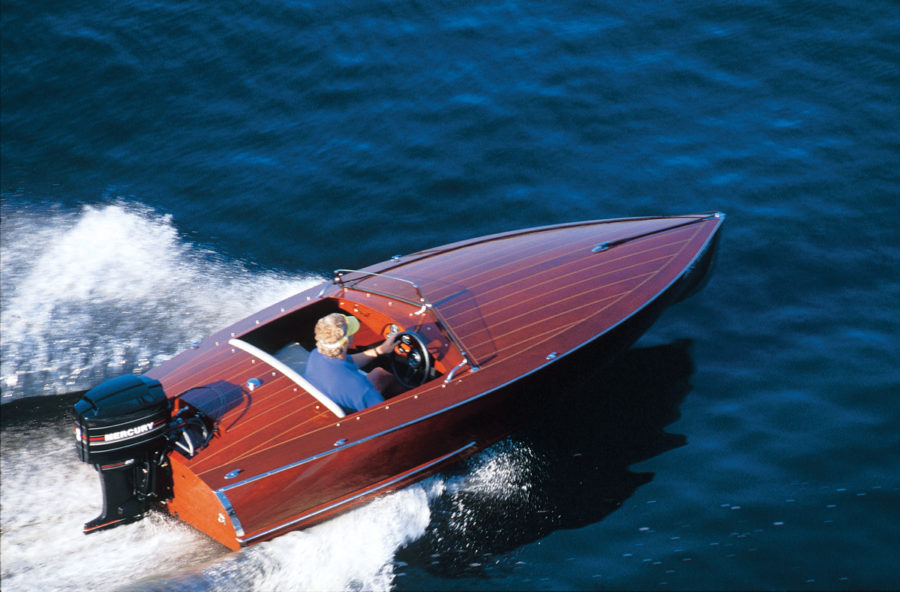
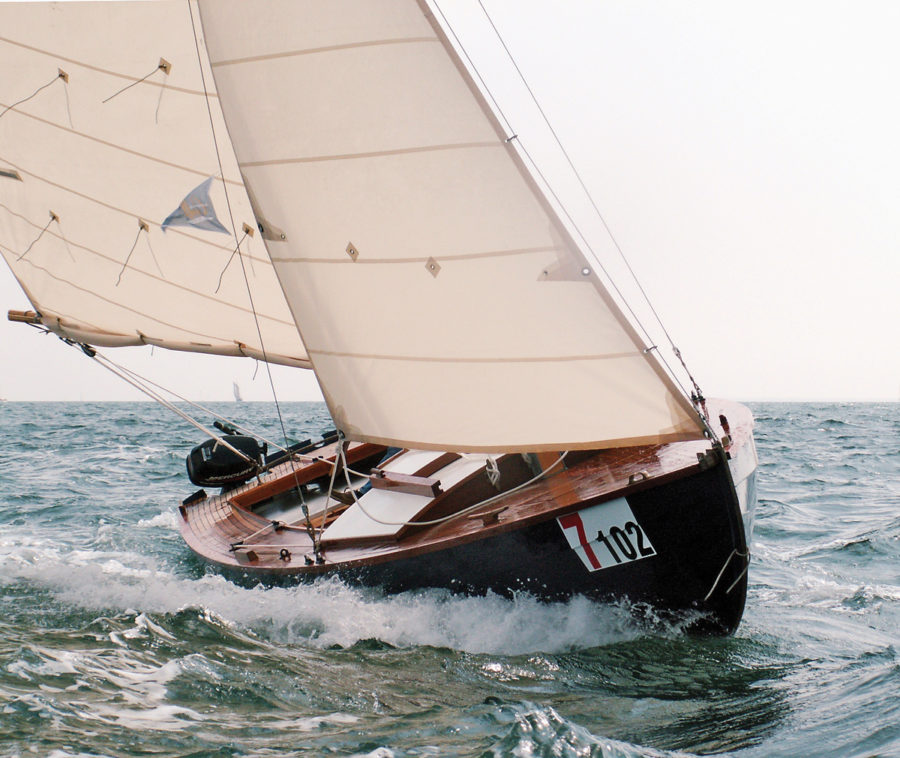
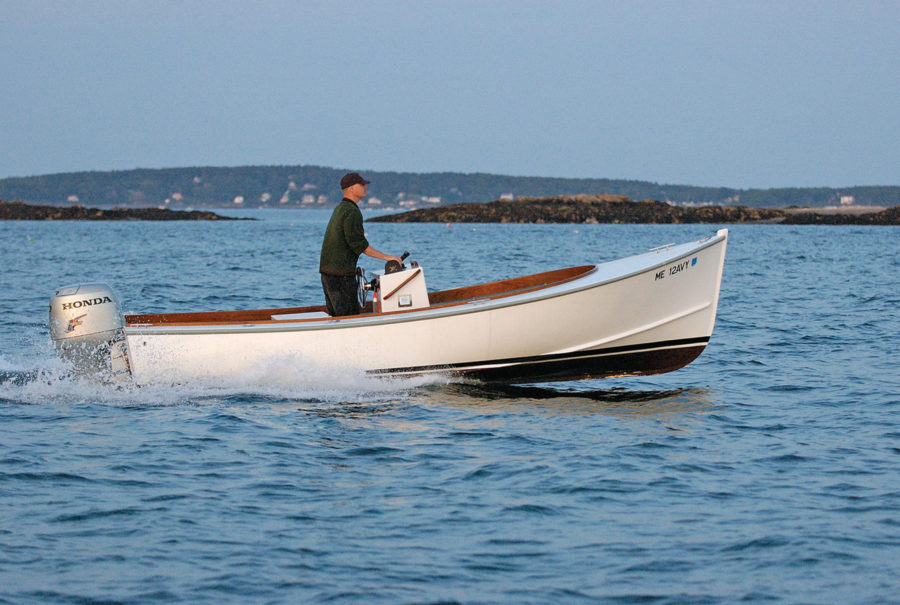
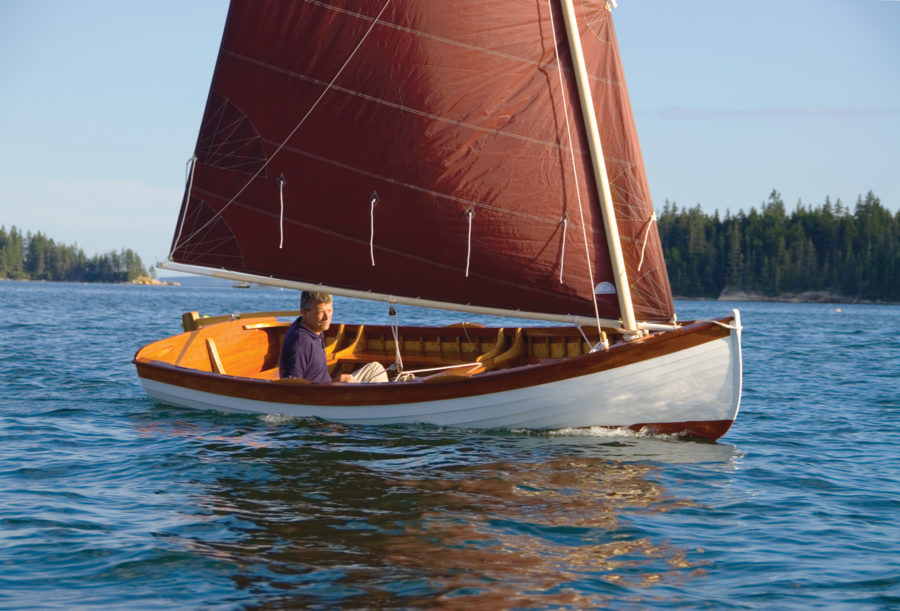
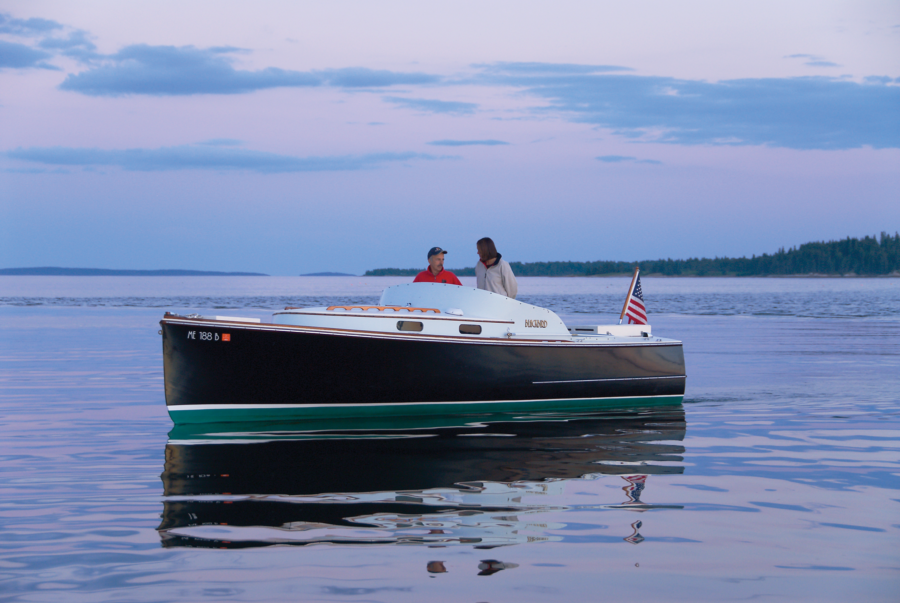
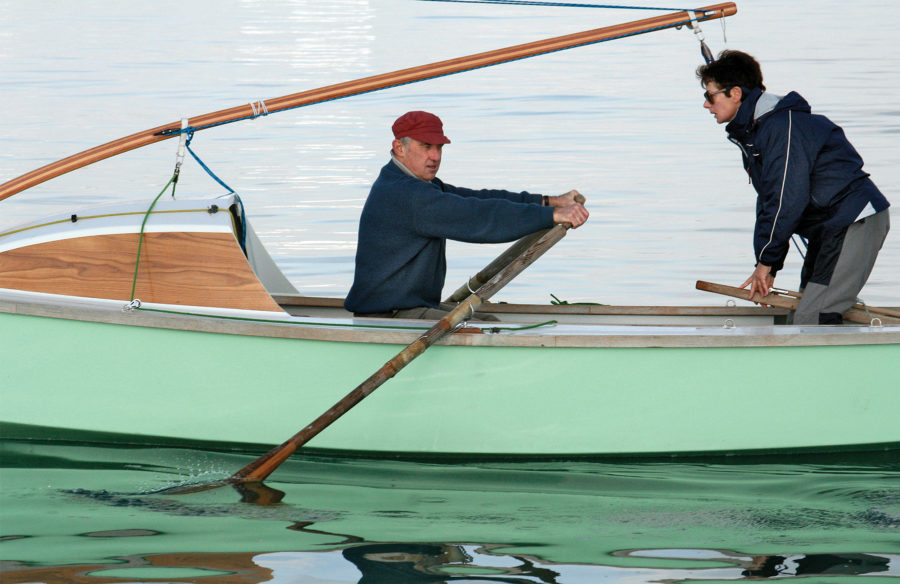
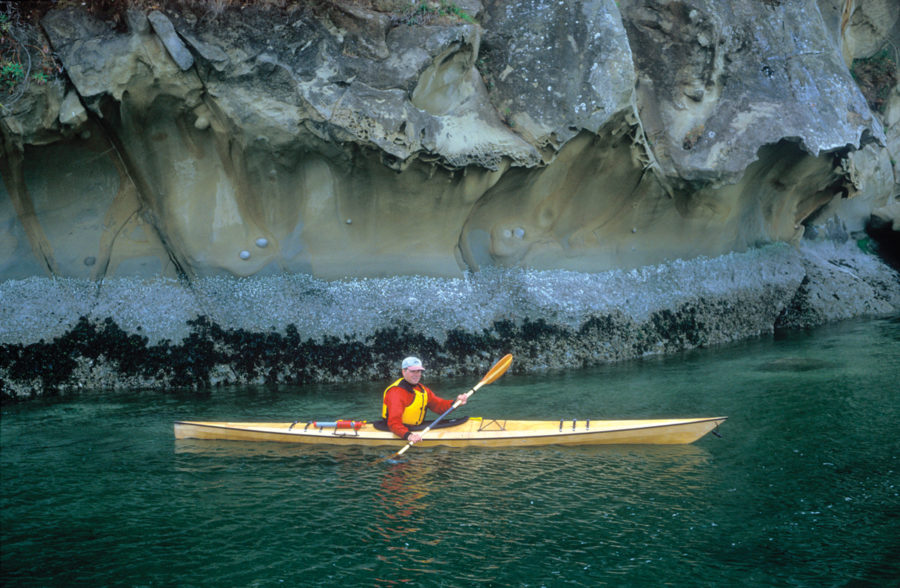
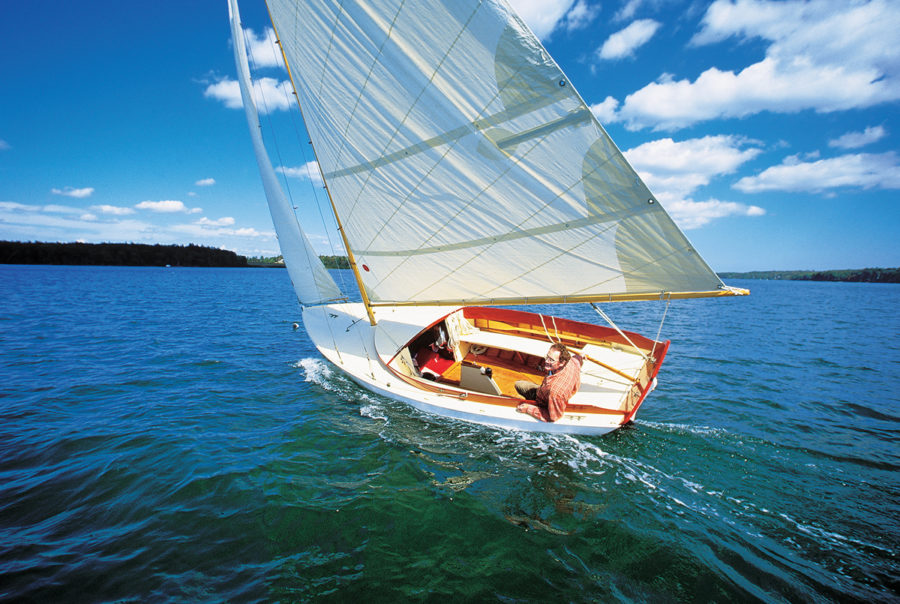
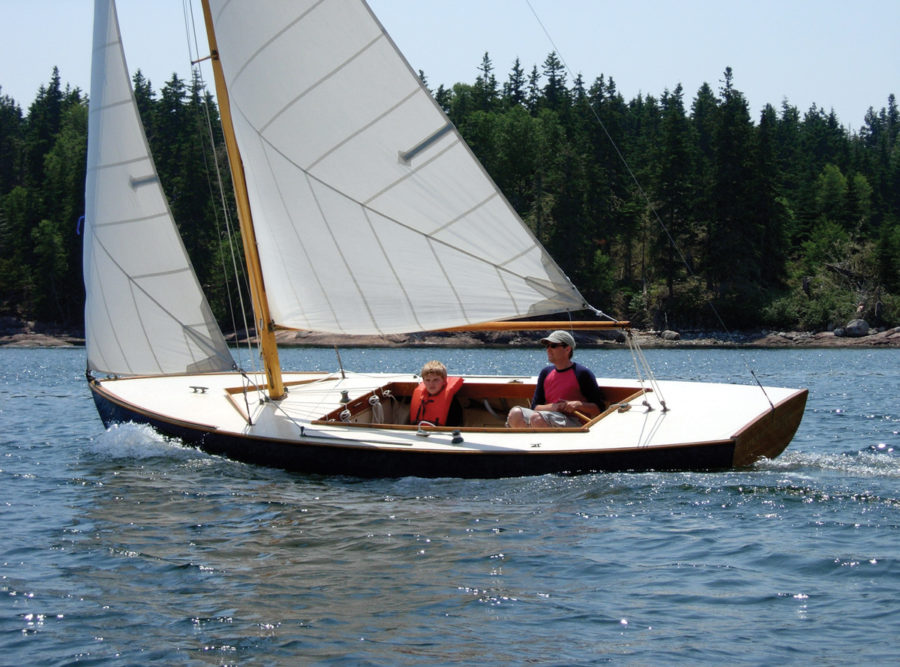
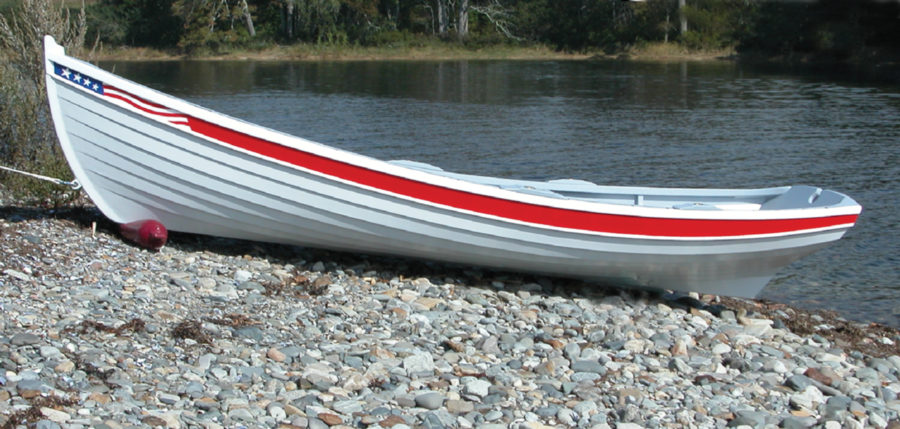
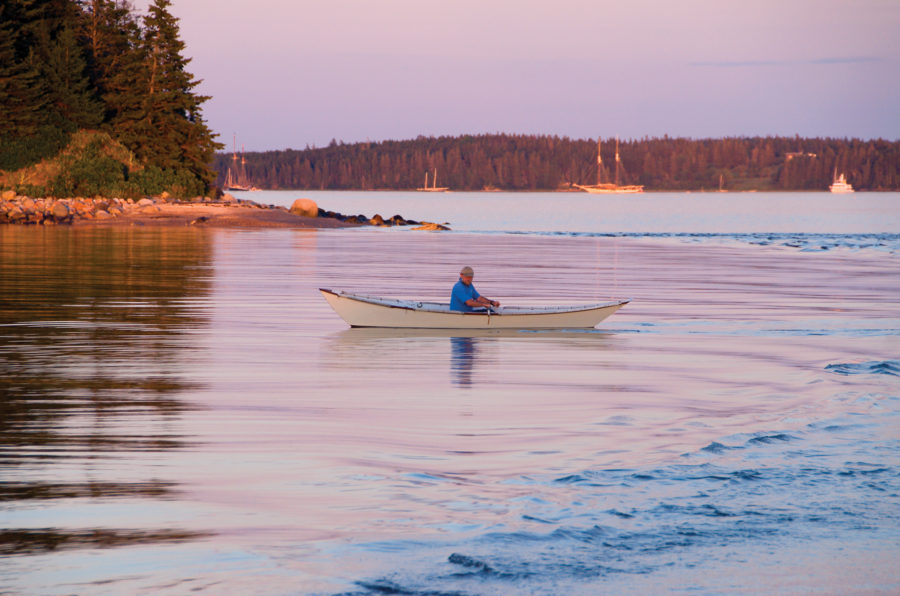
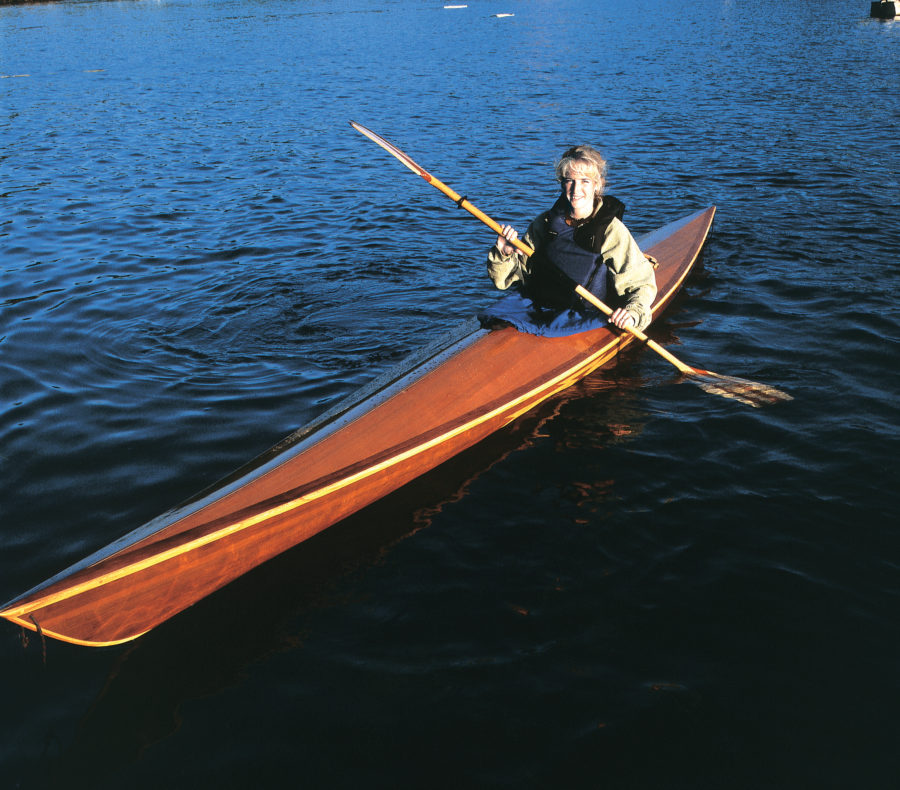
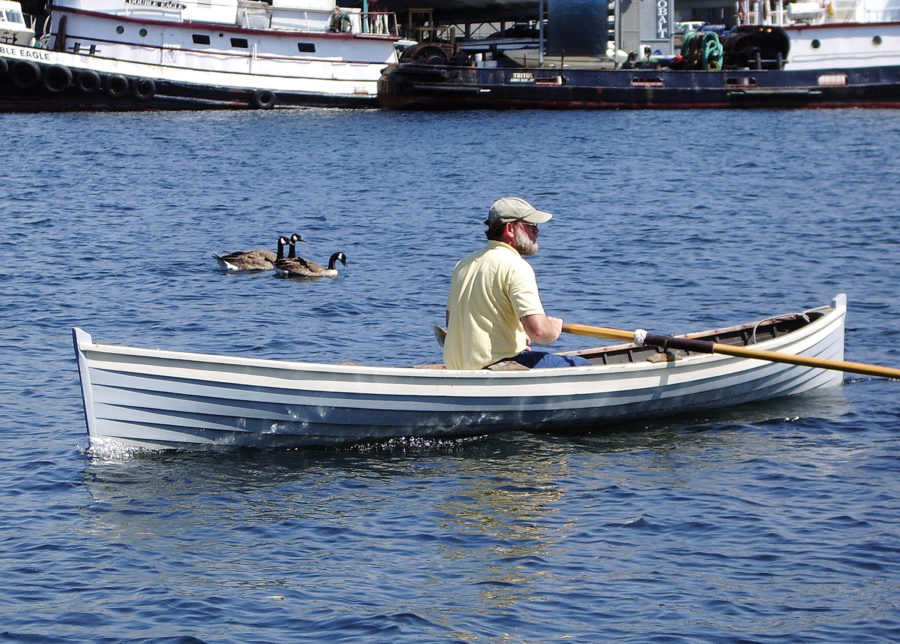
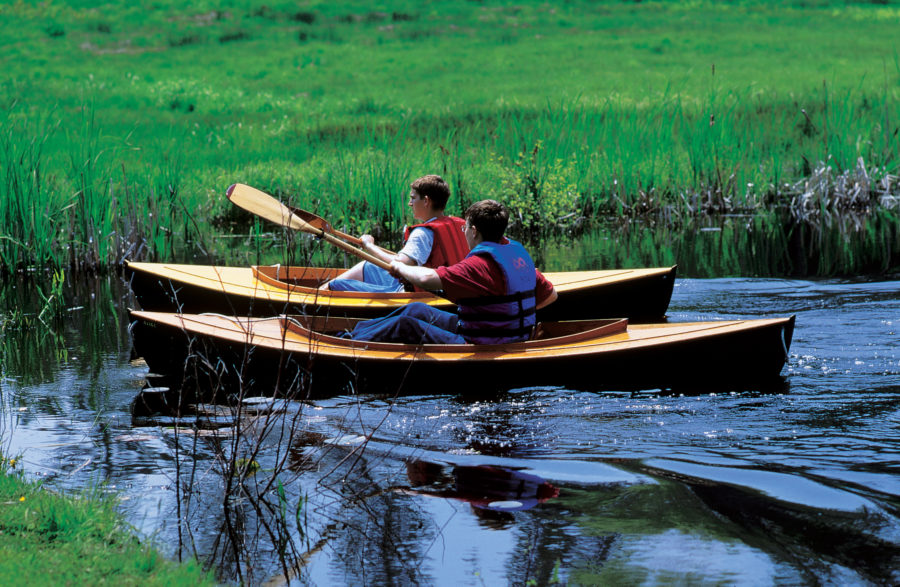
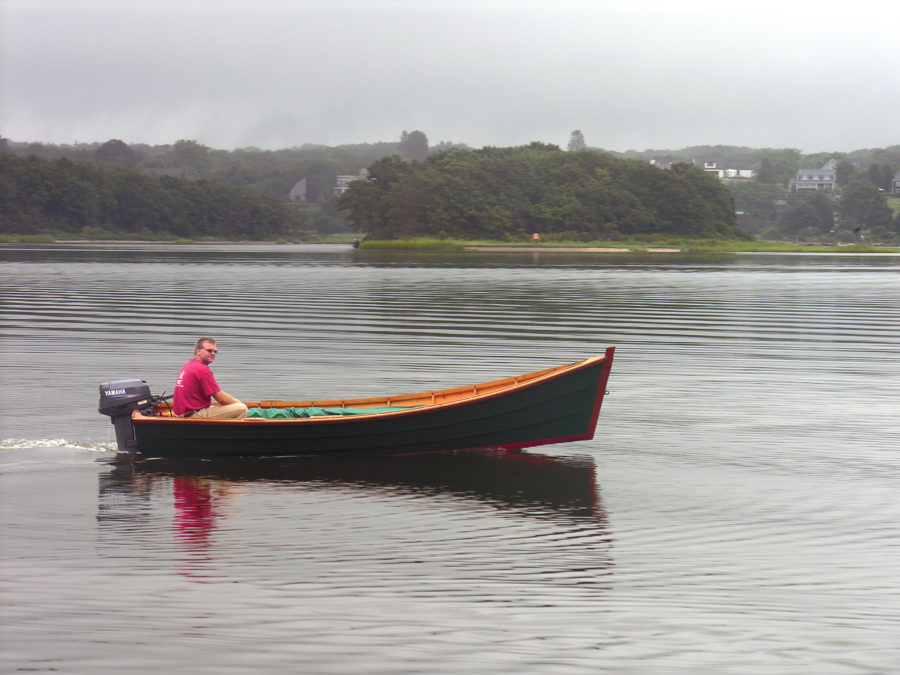
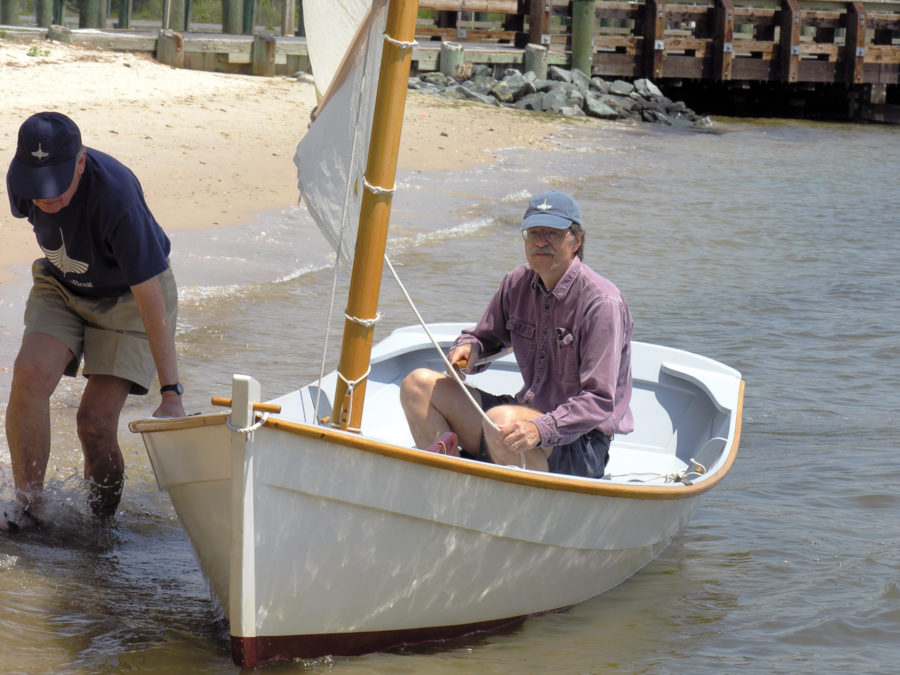
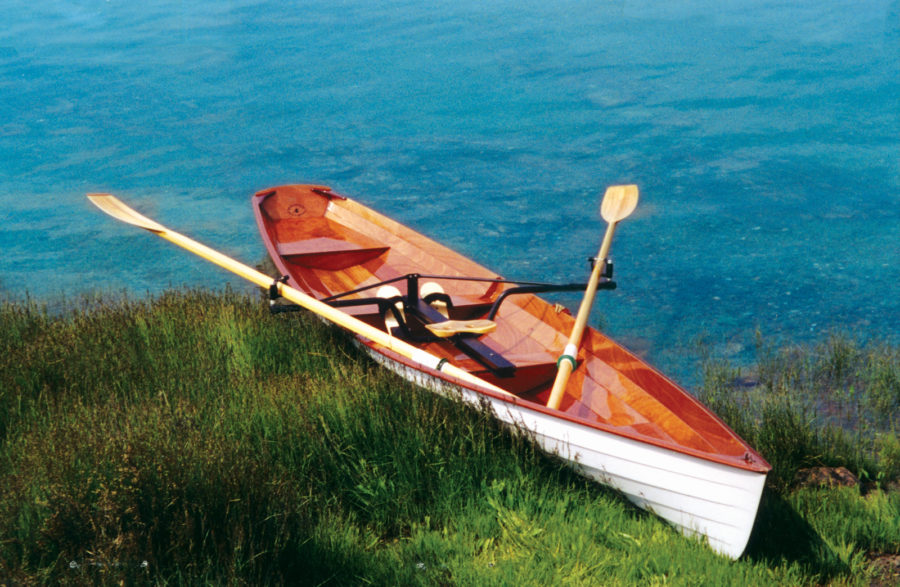
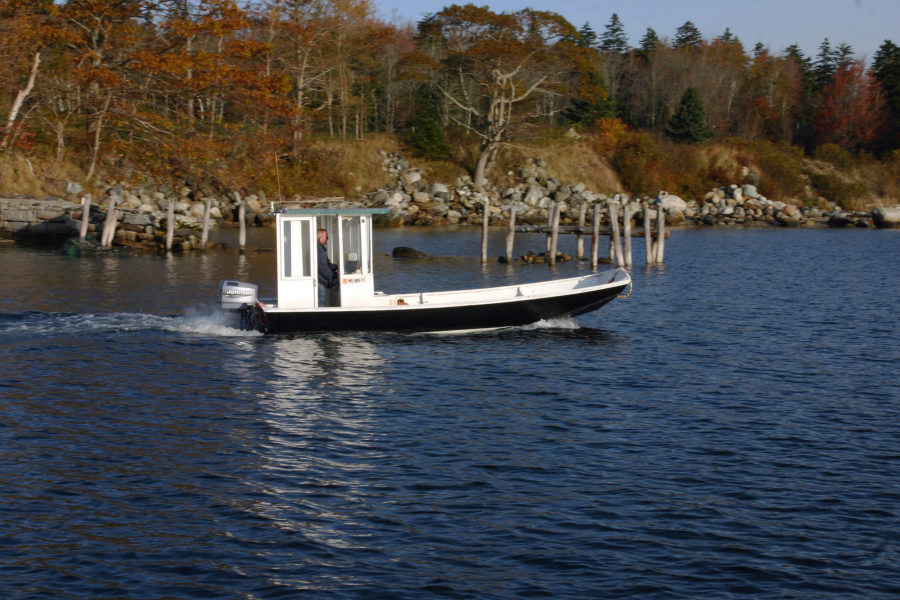
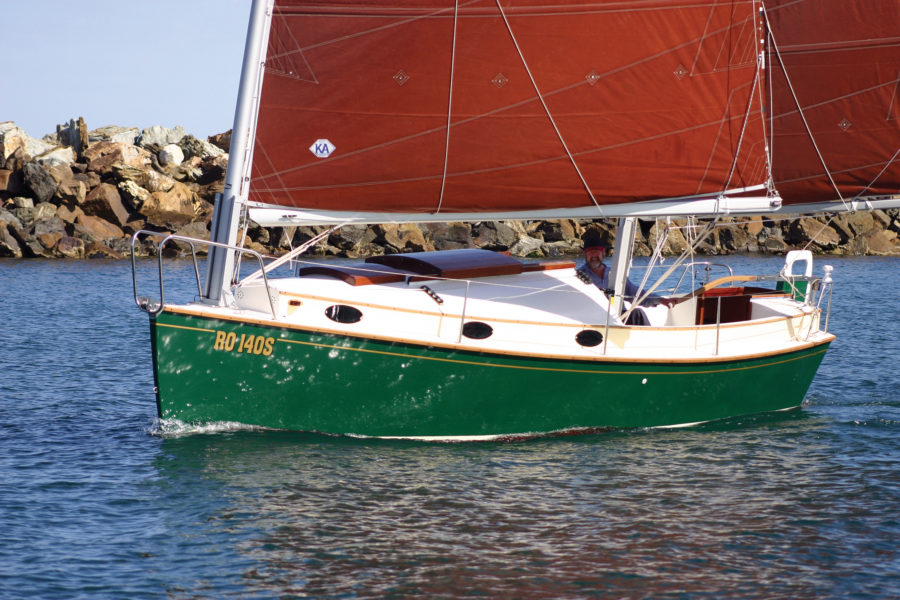
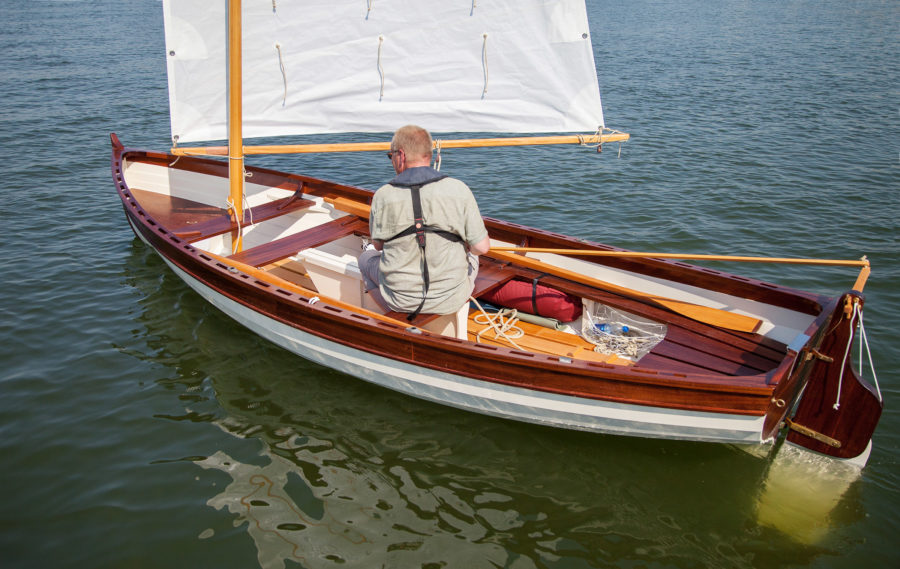
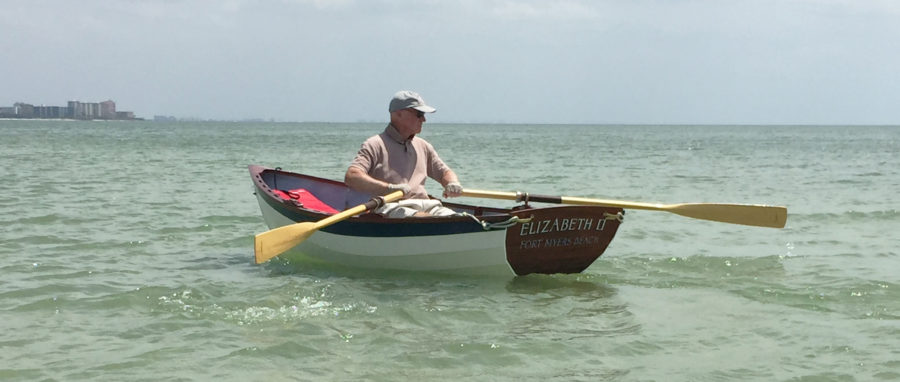
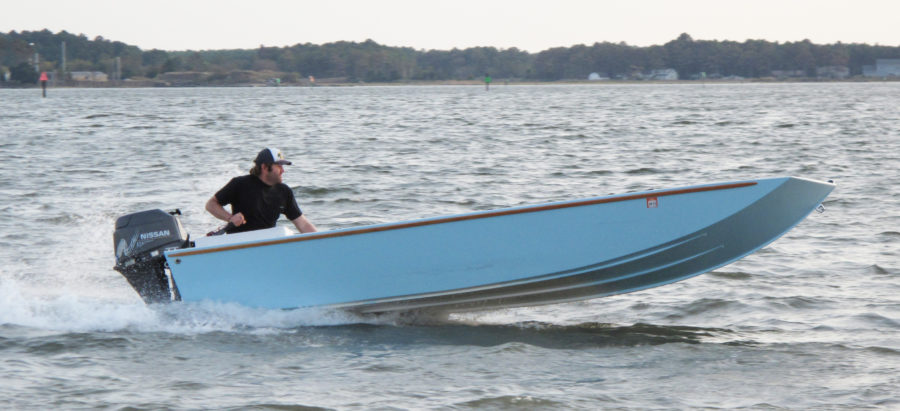
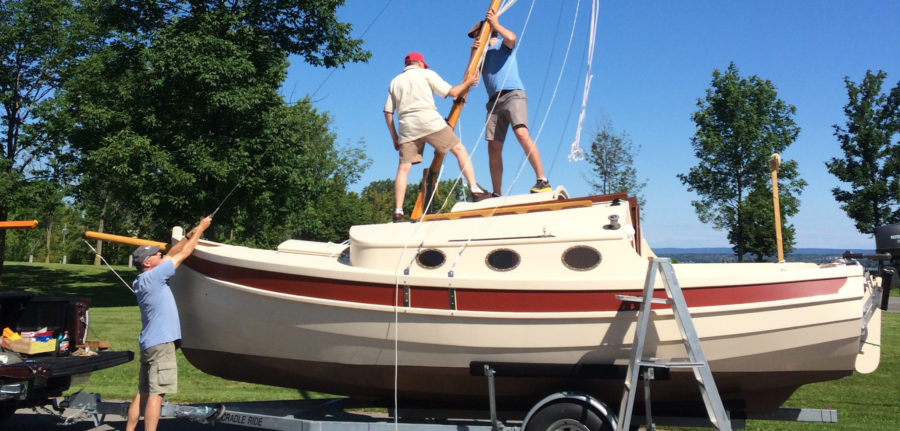
Paul Gartside is one of my favorite contemporary designers. His boats always combine the artistry of L. Francis Herreshoff and the technical savvy of Nathanael Herreshoff. Skylark is a beauty.
“Knees were to be made of local hackmatack root.”
Well, that is meaningless.
Does it mean the root of a Larix laricina.
Or perhaps it means the root of a Populus balsamifera.
Or perhaps the lumber-yard-supplied wood from a third option?
The boat design and as built sounds wonderful.
The New England colloquialisms, less so.
For some light on the subject – see “Knees from Trees.”